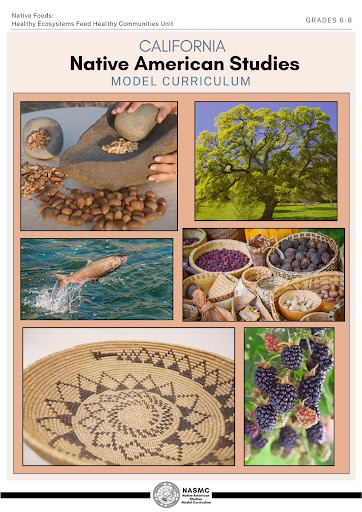Overview
Free Resources!
Pomo Stories: Healthy Ecosystems Feed Healthy Communities

Author: This unit was researched, authored, and edited by the California Indian Museum and Cultural Center, California Indian Education for All, and the San Diego County Office of Education. Key writers and researchers of this unit are Nicole Lim, Jayden Lim, and Dr. Staci Block. The unit resources were designed and created from funding through the California Department of Education’s Native American Studies Model Curriculum grant and contract.
Grade(s): 6th-8th Grades
Suggested Amount of Time: Two 60 minute Class Periods
Curriculum Themes
- History
- Relationship to Place
Learning Goals
Analyze the purpose of oral traditions in Native cultures.
Understand the interconnectedness of ecosystems from a Pomo worldview.
Develop respect for cultural narratives and their role in environmental stewardship.
Lesson Overview
In this lesson, students will explore a Pomo story to understand the importance of oral tradition in teaching lessons about community, respect, and connection to the environment. Through reading and analysis, students will gain insight into Native perspectives on interdependence and stewardship of ecosystems.
Teacher Background
In this lesson, students read and analyze a contemporary Pomo story to understand the purpose of oral tradition in teaching lessons about community, respect, and purpose. By exploring the themes and context of the story, students gain insight into the interconnectedness of humans, plants, and animals, as well as the cultural importance of land stewardship and fostering harmony within ecosystems.
Oral traditions have been a cornerstone of Native cultures, passing down lessons on interdependence, environmental care, and cultural values. Pomo stories, in particular, often highlight the deep relationship between humans, plants, and animals, emphasizing the responsibility humans have to maintain balance in their natural world. These stories provide guidance on avoiding conflicts that arise from imbalance and offer wisdom on topics such as family, spirituality, food customs, and human nature.
The story featured in this lesson is from How a Mountain Was Made, a collection by Greg Sarris, the Honorable Chairman of the Federated Indians of Graton Rancheria in Sonoma County, California. The stories center around Sonoma Mountain, a sacred and culturally significant location, and offer a place-based lens into Native perspectives.